This article was co-authored by Julie Brow-Polanco. Julie Brow-Polanco is a Master Herbalist & Certified Aromatherapist with more than 11 years of experience. She is an expert on natural remedies and specializes in using them to support whole-body wellness, particularly immune, digestive, nervous, and reproductive health. Julie earned a Bachelor's Degree in Psychology from Dominican University, a Master Herbalist Certification from The School of Natural Healing, and a Certificate of Aromatherapy from the Pacific Institute of Aromatherapy. Julie is a member of the American Herbalist Guild and a Certified Aromatherapist through the National Association of Holistic Aromatherapy.
This article has been viewed 776,647 times.
Are you at the wheel and feeling ill? Feeling like you may…hurl? Many motorists have never considered what to do if, while driving, they become sick. Nausea and vomiting while driving are not merely unpleasant but can be potentially deadly if handled poorly. If you are at risk, if you are chronically motion-sick or have nausea because of chemotherapy or another medical condition, being able to pull over and safely be sick might save your life.
Steps
Anticipating the Problem
-
1Avoid driving. Motion sickness is likely caused when involuntary movement (as in a car or boat) confuses the brain, which normally senses movement by signals coming from the inner ear, eyes, and surface receptors.[1] It is a common problem. If you are prone to motion sickness and vomiting, one way to avoid a dangerous situation is to avoid driving.
- According to the Mayo Clinic, nausea and vomiting are more common in chemotherapy patients with a prior history of motion sickness.[2] You may want to avoid driving for the duration of your therapy, if you suspect a problem will arise.
-
2Take non-drowsy motion sickness medication before driving. If you experience severe motion sickness, you might try an over-the-counter medication like Dramamine or Meclizine. These will usually work within 30 to 60 minutes. However, make sure to choose a non-drowsy variety. Regular Dramamine has a sedative effect, for example, which makes driving under its influence dangerous![3]
- Another option is to take an antiemetic or anti-nausea drug. Emetrol, for example, for Pepto-Bismol may be appropriate.[4]
- Always consult a doctor about what medicine is best for you. S/he will know about possible side-effects and adverse drug interactions.
Advertisement -
3Stock your car with chewing gum and sick bags. Be prepared if you are prone to vomiting. Stock vomit bags near the driver’s seat, for example, either paper or plastic bags, and consider lining the passenger seat and/or floor with plastic sheeting.
- Chewing also helps to reduce nausea[5] for example, so keep a mild-flavored gum handy, like Juicy Fruit. However, you may find that chewing in general helps your symptoms. Snacking on sweets of just chewing in general may relieve your body’s conflict between vision and balance.
- Fresh, cool air also seems to help motion sickness slightly. Keep your driver’s side window open slightly or the vents pointed at your face.
-
4Eat ginger before you drive. Ginger is an old herbal remedy for nausea and some studies indicate that it may help motion sickness. Try taking a supplement of 250 mg three times per day, when driving heavily. Alternately, you might buy some ginger gum to chew, doubling the effects of chewing with the soothing qualities of the herb.
- Keep in mind that ginger supplements may increase the risk of bleeding, especially if you are on a blood-thinner or aspirin. Talk to your doctor to see if ginger supplements are OK for you.
- You could also take ginger tea in a thermos and sip regularly to relieve symptoms of nausea. To make this, add 1 teaspoon of ginger (grated or powdered) to 8 ounces of hot water. Cover and let steep for 10 minutes, then transfer to your thermos. If using grated fresh ginger, you may need to strain it before adding to the thermos. Sip as needed at rest stops.
-
5Drive defensively and learn the warning signs. If you must drive, drive defensively in case you need to pull over quickly. Stay in the outer lane, for example, and avoid expressways or roads where it is hard to make a quick exit or safe pull off.
- Learn to read your body’s reactions. If your motion sickness usually starts with a light headache, worsens, and then turns to nausea and vomiting, note whenever you get a headache. Take that as a sign that you should pull over.
Reacting to Sudden Nausea
-
1Alert your passengers. Let your passengers know if you are suddenly overcome with nausea. Passengers can help either by giving you something to vomit into or, in dire need, by grabbing control of the wheel. Someone can also cup their hands as an impromptu vomit bag. Gross, yes, but perhaps better than a lingering stench in the car of vomiting on your clothes. The important thing is that they know what is happening and do not panic.
-
2Try to pull over carefully. The most important thing is controlling the car and the ensuring the safety of you, your passengers, and other motorists and pedestrians. Your clothes are the least of your worries. If you are driving at a slower speed, between 10 and 30 mph, try to pull over. If that proves to be impossible and there are no or only a few cars behind you, slow to a stop, turn on your hazard lights, and vomit.
- Don’t worry about the reaction of other motorists in this situation. At slow speeds, there is little danger in stopping in the road. Open the door and vomit if possible.
- If you can, pull over onto the side of the road. At the first sign of nausea, brace your body for another couple seconds and attempt a safe, slow maneuver onto the road shoulder.
-
3At higher speeds, use extreme caution. Do not stop in the middle of the road. Drive defensively, use your indicator, and do not assume other cars will slow down for you.
- Do not pull into the center divide on a freeway or highway. Center divides are closer to the fastest moving cars and offer less space than the shoulder.
-
4Vomit outside only under safe conditions. As said, as slower speeds you should be able to stop, open your door, and vomit onto the pavement. However, this maneuver is very dangerous on faster roads and expressways. Even pulled onto the shoulder, you should avoid getting out of your car. Exercise caution. It is better to hurl on your floor mats than to be seriously injured by another car.
- At high speeds, and if stopping is impossible take your foot off the accelerator while preparing to vomit and hover your foot over the brake in case you need to slow the car down quickly.
-
5Vomit straight ahead. If unable to pull over, your primary aim should be to maintain control over the vehicle. Do not pivot your head to the side and take your eyes off the road. Such a movement naturally causes one to swerve. Instead, look straight ahead and aim for a container or, barring that, the steering wheel/column or front window. You can wipe it off later with your hand.
- If a bag or container is unavailable, you might also pull out your shirt collar and vomit onto your chest. While gross, this minimizes head movement and keeps you safest.
- Alternatively, aim for the floor. It is better to vomit on the seat or floor than on a console with sound system and air conditioning/heating controls etc.
Warnings
- Keeping control of the car is the most important issue when feeling ill behind the wheel.⧼thumbs_response⧽
- If you keep vomiting or have high illness or fever, immediately visit a hospital so they can take care of you.⧼thumbs_response⧽
- Driving with a severe flu can be considered reckless endangerment, as you are putting the lives of both yourself and other motorists in jeopardy if you lose control of the vehicle.⧼thumbs_response⧽
Things You'll Need
- Vomit bag or anything else to vomit in or on
- Bottle of water
- Breath mints
- Paper towels for cleanup
References
About This Article
Vomiting while driving can be extremely dangerous if you handle it poorly, but luckily you can take a few simple steps to stay safe. If you know you’re prone to sickness while driving, try to stay in the outer lane, which will make it easier for you to pull over. When you feel nauseous, pull over onto the side of the road and vomit. If this is impossible, slow down and turn on your hazard lights to let cars behind you know that you’re having an emergency. If you’re traveling at a high speed and can’t stop, take your foot off the accelerator and hover it over the brake in case you lose control and need to slow down. Use your indicators to warn other motorists of your problem. You should also stay facing straight ahead as you vomit, since your main consideration needs to be keeping your eyes on the road. If you can’t get to a bag or container, aim to vomit on the floor in front of you to minimize your movements. For tips on how to prevent nausea while driving, read on.


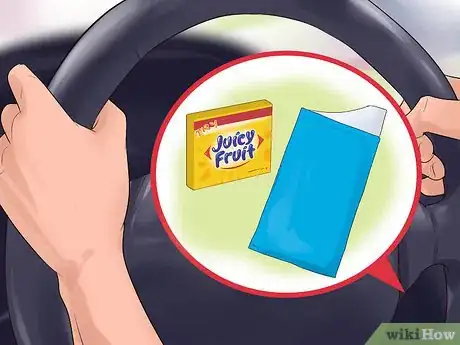



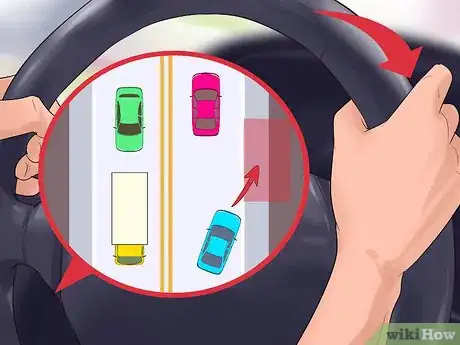
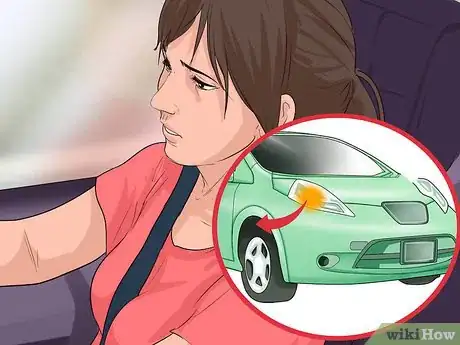








-Step-9-Version-5.webp)

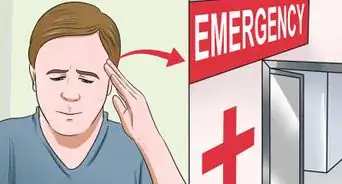
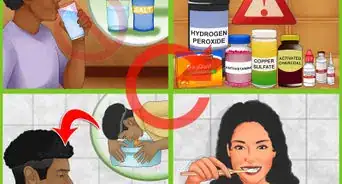

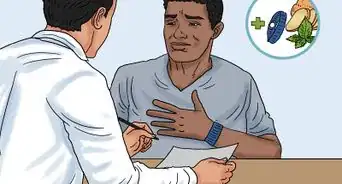














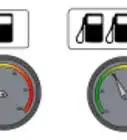



































Medical Disclaimer
The content of this article is not intended to be a substitute for professional medical advice, examination, diagnosis, or treatment. You should always contact your doctor or other qualified healthcare professional before starting, changing, or stopping any kind of health treatment.
Read More...